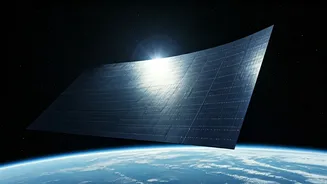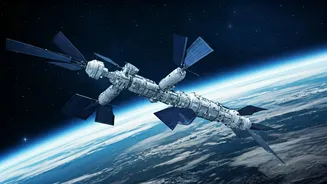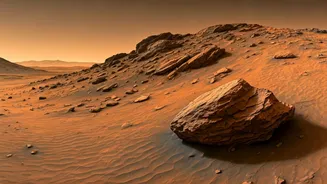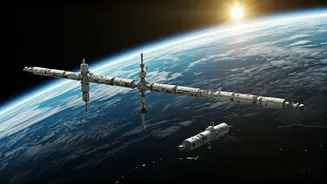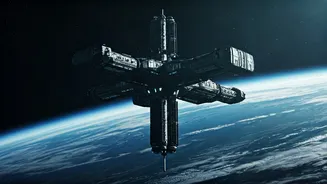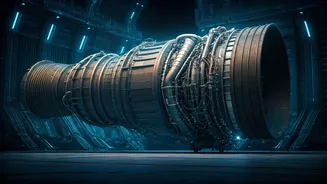Solar Sail Basics
Solar sails operate using the momentum of sunlight, similar to how wind pushes a sailboat. These sails are ultra-thin reflective surfaces that capture
photons emitted by the sun. This light, although massless, carries momentum. When photons bounce off the sail, they transfer a small amount of momentum to the spacecraft, resulting in a gradual but continuous acceleration. Traditional solar sails have been envisioned as large, flat structures, but limitations exist in deployment and maneuverability. The idea of folding solar sails is to overcome those limitations. Such sails are designed to be compact during launch and then unfurl once in space. This design provides benefits for space travel by assisting with aerobraking and atmospheric reentry, enhancing the efficiency and safety of space missions.
Aerobraking Advantages
Aerobraking is a technique employed by spacecraft to slow down using the friction generated by the atmosphere of a planet. It involves repeatedly passing through the upper atmosphere. Conventional aerobraking has drawbacks, including intense heat and stress on the spacecraft, demanding robust thermal protection systems. However, with foldable solar sails, the process can be considerably refined. The sails could potentially be used to control the spacecraft's entry into the atmosphere, offering a more controlled and gentle deceleration. By adjusting the sail's orientation, the spacecraft can manage its atmospheric drag and braking force, increasing the precision and efficiency of the aerobraking maneuver. This offers the potential to significantly reduce fuel consumption and the time needed for orbital adjustments around planets such as Mars, while also reducing the weight of the spacecraft by eliminating the need for heavy engines and fuel.
Reentry and Atmospheric Control
Atmospheric reentry is a critical and challenging phase for any spacecraft returning to Earth. It involves enduring intense heat, aerodynamic forces, and other harsh conditions. Foldable solar sails have the potential to improve reentry procedures. By precisely positioning the sail, the spacecraft can regulate its descent angle and speed. The sails can act as a form of 'air brake', modifying the drag to manage the heat load and reduce stress on the spacecraft. This helps maintain a safe and stable trajectory. Moreover, the precision offered by the sails can lead to more accurate landing. These innovations could pave the way for the safe and reliable return of astronauts and scientific payloads to Earth, making space exploration safer and more practical.
Foldable Sail Designs
The design of foldable solar sails is essential for their practical use. Several concepts are being explored. These designs often involve sails made from lightweight, yet strong, materials like thin films or membranes. The key element is the mechanism for folding and unfolding. Researchers are exploring methods like origami-inspired folding patterns or inflatable structures that expand once deployed in space. These folding techniques allow the sails to be packed into a small volume during launch, reducing the launch costs and making it possible to accommodate larger sail areas. Different designs may offer different advantages in terms of performance, deployment speed, and overall complexity. These are aimed at achieving a balance between structural integrity, maneuverability, and the ability to operate effectively in the harsh conditions of space.
Future Mission Prospects
The integration of foldable solar sails into future space missions could bring significant advantages. These sails might be used for a variety of purposes, including enhanced orbit transfers, interplanetary travel, and extended mission durations. For example, solar sails could be utilized for missions to the outer solar system. They would permit missions to travel further distances without the requirement for large amounts of fuel. Furthermore, the use of sails could reduce the dependence on traditional propulsion systems, reducing overall mission costs and complexity. As technology advances, foldable solar sails are expected to play a significant role in shaping the future of space exploration by opening up new opportunities.
